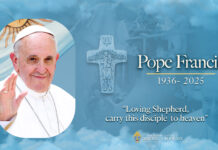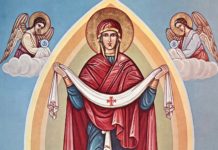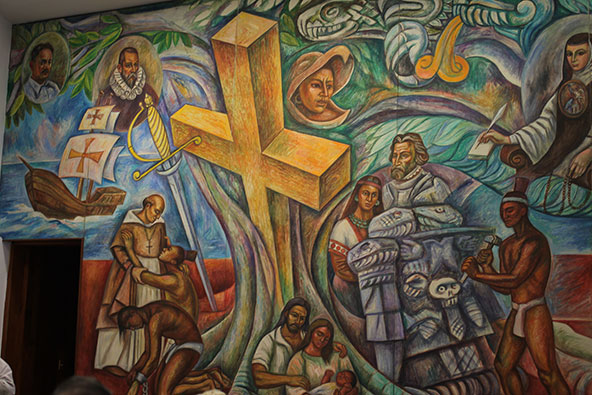

Santo Domingo de Guzman, known by English speakers simply as St. Dominic, founded the Order of Preachers in 1216 in large part to fight the Albegensian heresy. The Albegensians lived austere lives of poverty, publicly whipping each other to show the body was bad. They stood in stark contrast to many clergyman of the time. Fat and happy preachers had a hard time evangelizing the poor, if they even tried.
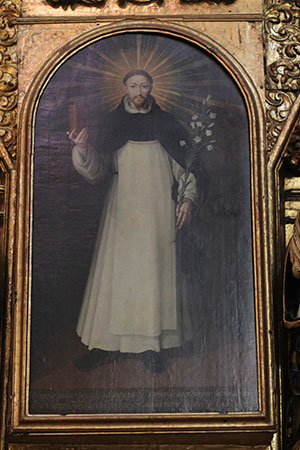
St. Dominic founded the order to live simple lives of poverty, but unlike other orders, his primary goal was preaching the Word of God. He believed that by being more like the audience to whom he preached — poor and simple — the Gospel would be spread more effectively.
Pilgrims on the Diocese of Phoenix Year of Faith pilgrimage visited the Iglesia de Santo Domingo de Guzman in historical downtown Mexico City on the fourth day of the pilgrimage. While it’s a beautiful church, it’s more simple than, say, la Iglesia del la Enseñanza, dedicated to the Virgin of the Pillar, which we also visited that day. Visiting the church dedicated to St. Dominic was meaningful for me personally since I am a life-professed lay Dominican. But I also think celebrating Mass in a church dedicated to the founder of the Order of Preachers is appropriate for this middle day of our journey, which I suspect will be a turning point.
Auxiliary Bishop Eduardo A. Nevares concelebrated the Mass with Fr. Fred Adamson and Fr. Ernesto Reynoso. Bishop Nevares related the day’s readings to Porta Fidei, Pope Benedict’s apostolic letter proclaiming the Year of Faith.
“In the holy Gospel we see Jesus saying we need to seek, knock and the door will be opened for us,” the bishop said. “We are all sinners. We all need conversion. We must always trust in the Lord.”
He added: “Let us continue drawing nearer to the door of faith, calling to the Lord and our Blessed Mother. We must never tire of knocking on that door of faith.”
From there we traveled across the street to the Secretariat of Education Building. Until yesterday, we’d been enjoying the vibrant faith of the Mexican Church. We visited the beautiful grounds where St. Juan Diego lived and where the Blessed Mother appeared to him and the overpowering beauty of the Cathedral of the Assumption of Mary. Even the ancient pyramids testified to the centuries-long devotion the people of these lands have had to religion.
But when we entered the Secretariat of Education, we found something different.
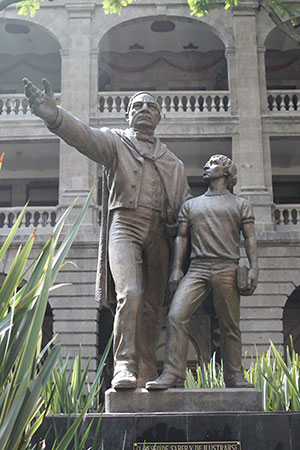
“You’re not going to find any religious symbols in these murals because this is a school, not a church,” said José Alfredo Martinez, our tour guide. Benito Juarez, who many consider to be the greatest Mexican president, definitively separated Church from State after the 1860 revolution, nationalizing Church property. It’s in the Mexican constitution that religion would not be taught at public schools — and by “religion,” I mean Catholicism. In one of the courtyards we saw four “influences” depicted in stone carvings — ships represented Spain, an Aztec warrior represented the indigenous, and the Buddha represented influences from the East. So while we didn’t see a crucifix in the Secretariat of Education building, Buddha is there.
There’s also a large statue of Juarez, standing near a young boy and pointing toward the path of, who knows, enlightenment? Away from Catholicism, that’s for sure. The inside of a chapel was gutted and now serves as some sort of multipurpose room. We did find one large canvas with a cross on it, among other symbols — the Spanish sword, the explorers ships, the Aztecs, and Dominican Friar Bartolomé de las Casas, who insisted on educating the indigenous.
But in Rivera’s murals, depicting celebration and work, religion is absent. And while his work represents everyday life for the peasant, he lets his anti-religious bias get in the way of an accurate depiction of the people of Mexico. That seemed to work just fine with the atheistic Mexican government that came to power after the revolution, who hired the so-called antiestablishment muralist to paint on the walls of government buildings. Whenever Rivera uses the cross in his work, it’s a sign of oppression, according to Manuel Terrazas, who assisted our pilgrimage while in Mexico City.
The apparition of Our Lady of Guadalupe made Mexico ground zero for the evangelization of the New World. It’s also the country that seemed to want to eradicate Christianity from within it’s borders with the anti-clerical laws of the 1917 Constitution. La Cristiada, the Mexican religious liberty war, was fought in 1926-1929 in opposition of this state-enforced oppression. The state made celebrating Mass illegal. Those who still practiced the faith were executed — priests and lay Catholics alike. The Cristeros rose to fight.
This all gives pilgrims pause for reflection, as we journey to Cristero strongholds in Guanajuato.



